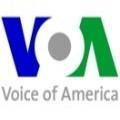New research indicates that high school science teachers who get actual, hands-on experience doing scientific research become better teachers as measured by their students' test results. The seemingly expensive program that brings mid-career teachers into the lab is actually a cost-effective strategy.
Twenty years ago, Samuel Silverstein founded the Summer Research Program at Columbia University in New York.
The program brings experienced science teachers into the university setting, where they work on actual research programs for a total of 16 weeks over two summers. They are paired with university science professors, giving them the chance to pick up skills that they might not have gotten when they were training to become teachers.
"Teachers get academic preparation," Silverstein says, "but they don't get much practical help in helping kids understand science, or themselves understanding the discipline of science." To provide even more practical help, Silverstein's program may pay for a university graduate student to assist in the high school teacher's classroom during the school year. In a paper published in the journal Science, Silverstein reports on the success of the program, as measured by students' performance on a standardized test for college-bound students called the Regents Exam. "By the third and fourth year after entry into the program, 10 percent more kids in these teachers' classes are passing a New York state Regents Exam in science than [students of] other teachers in the same school. That's a very, very big difference, and it's highly statistically significant." During their two summers doing science and working with grad students, professors, and other scientists, the high school teachers may pick up useful knowledge or teaching techniques, but Silverstein says he sees evidence of a change in the way they think about scientific problems.
"Teachers tell us, when I go back to my school, I'm going to stop saying 'that's right' and 'that's wrong' to students and say 'why do you think that?' Because that's what you scientists do to me all the time when I'm in the lab. You're much more interested in why I think something than whether I know the right or the wrong answer." The program is not cheap. It costs more than $27,000 per teacher. That's about equal to the cost of tuition at a public university for a four-year degree. The program is paid for by gifts and grants. But even if the high schools paid the costs directly, Silverstein says it would be a good investment.
"The cost of course repetition that is eliminated by these additional students, 10 percent more passing a Regent's exam, and the increased retention of teachers, because teachers who are in this program stay in teaching because they're succeeding -- those two factors mean the [New York] city department of education is making $1.14 for every dollar our sponsors put into the program." Samuel Silverstein's program at Columbia University is for science teachers, but he says it could be adapted to any other area of education. Art Chimes, VOA News, Washington.

